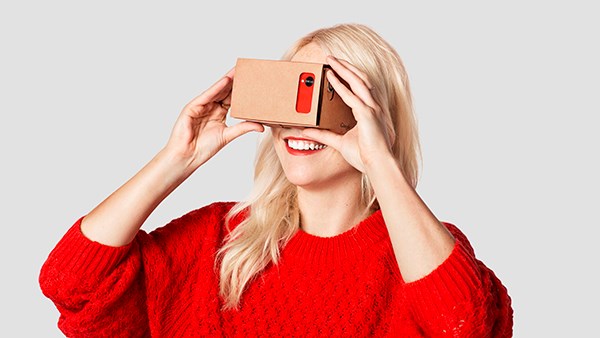Virtual reality (VR) is pretty much the holy grail of technology
Well, virtual reality, teleportation and the secret to getting the caramel in the Caramilk bar are really the big three, but VR is becoming a reality faster than you may think.
For the uninitiated, and those just waking from a 50-year coma, VR is a computer simulation that feels immersive, like you are physically present in a real world. Think the holodeck from Star Trek, or the world of the Matrix movies. Now, over the years, there have been some interesting attempts at giving us a VR-like experience, most notably from companies like Nvidia, who gave gamers funky glasses that let them view their video games in a more 3D and immersive fashion… but it still wasn’t true VR. For one thing, the action was still just contained on the rectangle of your computer monitor. Even if things were popping off that screen and into your face (seemingly), it was still pretty limited. If you turned your head to the side, all you got was a view of your couch. Admittedly, that couch looked pretty real, though.
However, new products like the upcoming Oculus Rift get us even closer to that true VR experience.
I’ve been writing about the Oculus Rift since 2012, when the Rift’s Kickstarter crowdfunding campaign went bananas and the start-up exceeded its $250,000 funding goal in a single day, going on to raise more than $2.4 million. Then Facebook bought the company for $2 billion, and VR went from a niche gaming thing to the most anticipated tech for everyone from geeks to the mainstream.
The Rift – looking like a mutant pair of ski goggles – basically straps a high definition computer screen to your face, and using its built-in accelerometer and position-tracking cameras, lets you turn your head, look up and down, and all around inside a virtual world. Early demos have shown people reacting with genuine fear having to cross a rickety virtual bridge over a chasm, or screaming as zombies lurched out of the shadows at them in a horror house. Oculus started giving developers prototypes of the Rift years ago, so when a consumer version finally comes out there will be plenty of games, programs and applications for the product. Pair the Rift with something like the new Myo gesture controller that does away with conventional keyboard and mice in favour of using gestures to control tech, and you’re as close as you can be to true VR.
But, even though the Myo is already out now, the Rift’s release has been pushed back to 2016 sometime, according to a statement by the company a few weeks ago. Previous statements have almost guaranteed 2015 as a release date, so we’re just going to have to wait and see if the 2016 release happens.
But if you’re anxious to have a VR-like experience right now – and don’t have the big bucks to spend on a Rift developer kit – then you should plunk down $25 and invest in a Google Cardboard.
What’s a Google Cardboard? It’s VR on the cheap, so now everyone can step into a virtual world for the price of a cup of coffee. Essentially it is a poor man’s Rift, constructed almost entirely of cardboard (hence the name) and made to house your smartphone. Initially, the Cardboard was only usable by folks with Android phones because their app store was the only one with Cardboard VR compatible apps. However, more recently, Apple’s app store has been getting releases of those apps, opening up the appeal of Cardboard for more users.
There are a bunch of companies that sell Google Cardboard kits, some you assemble yourself, others will make it for you, or you can buy the plans and visit a hardware store yourself for the components. Once assembled, you just download an app or two, stick your phone inside and voila, you’re riding a virtual rollercoaster or shooting zombies in a darkened subway. And thanks to today’s smartphones having their own accelerometers, you can turn your head, look up and down and all around, and stay immersed in your virtual world. Sure it’s kind of limited, and cheap-looking, but it’ll have to do until the Rift’s eventual consumer release.
Now, I wonder if anyone is working on that Caramilk secret thing?




